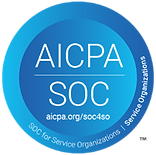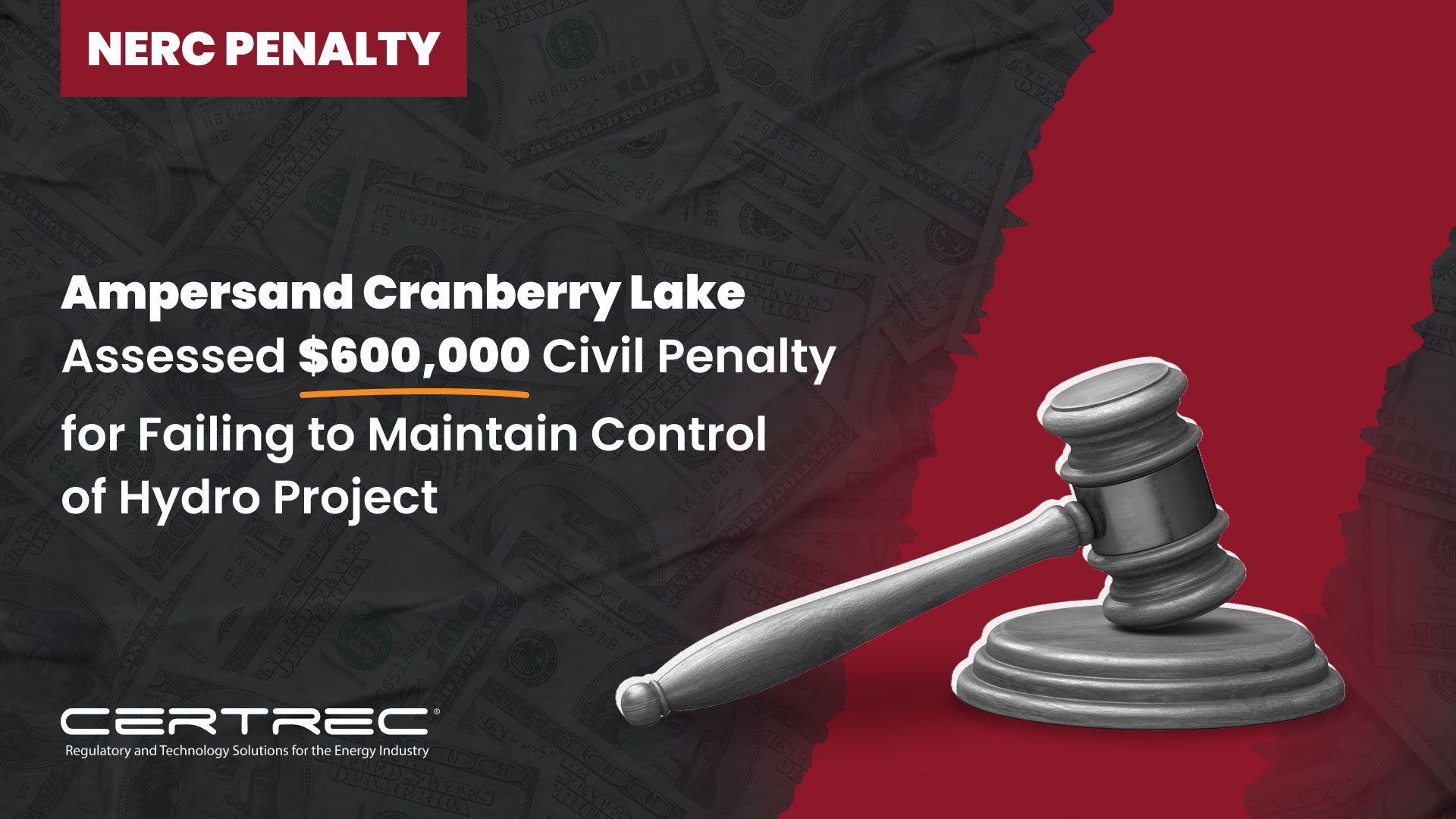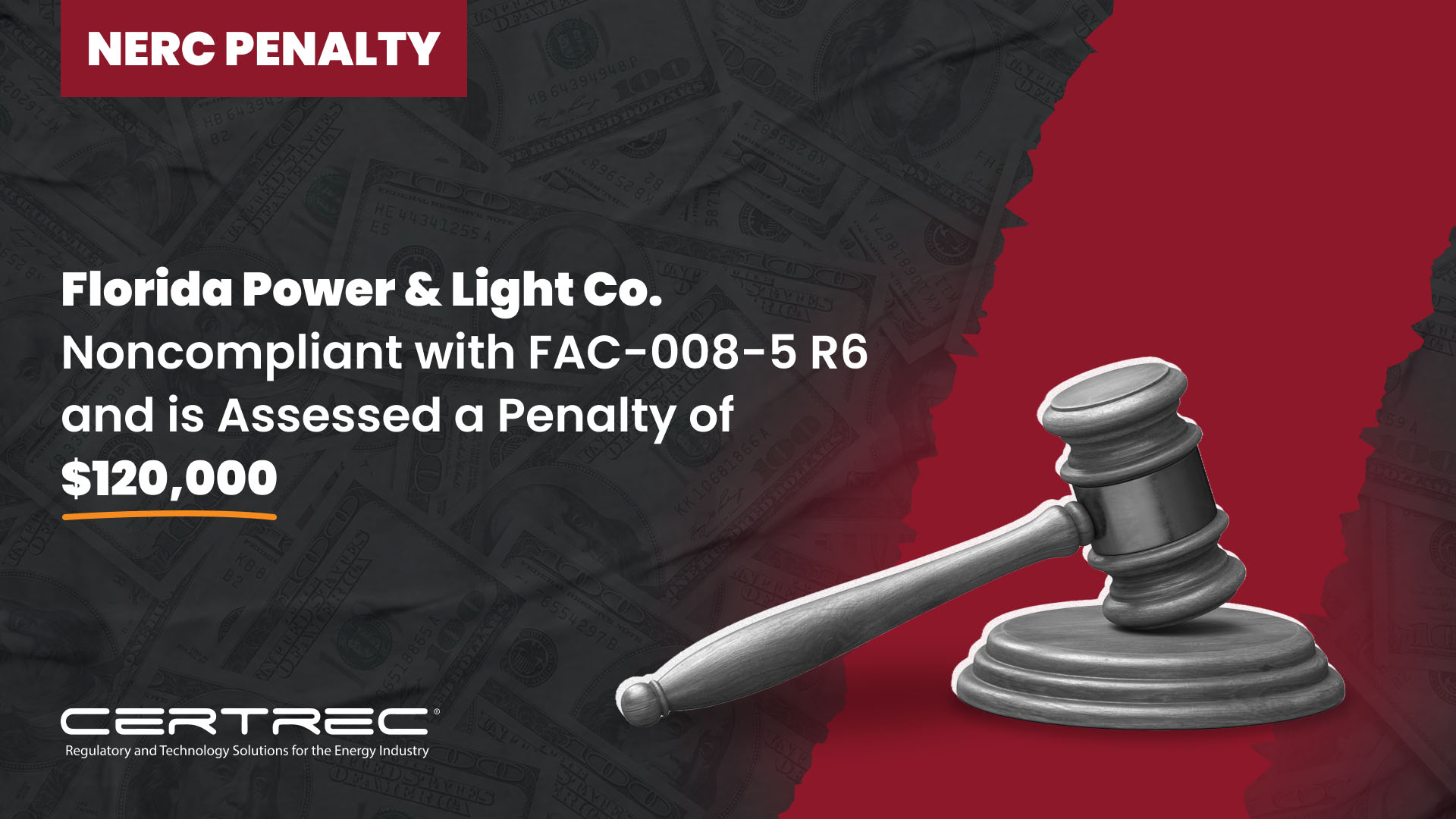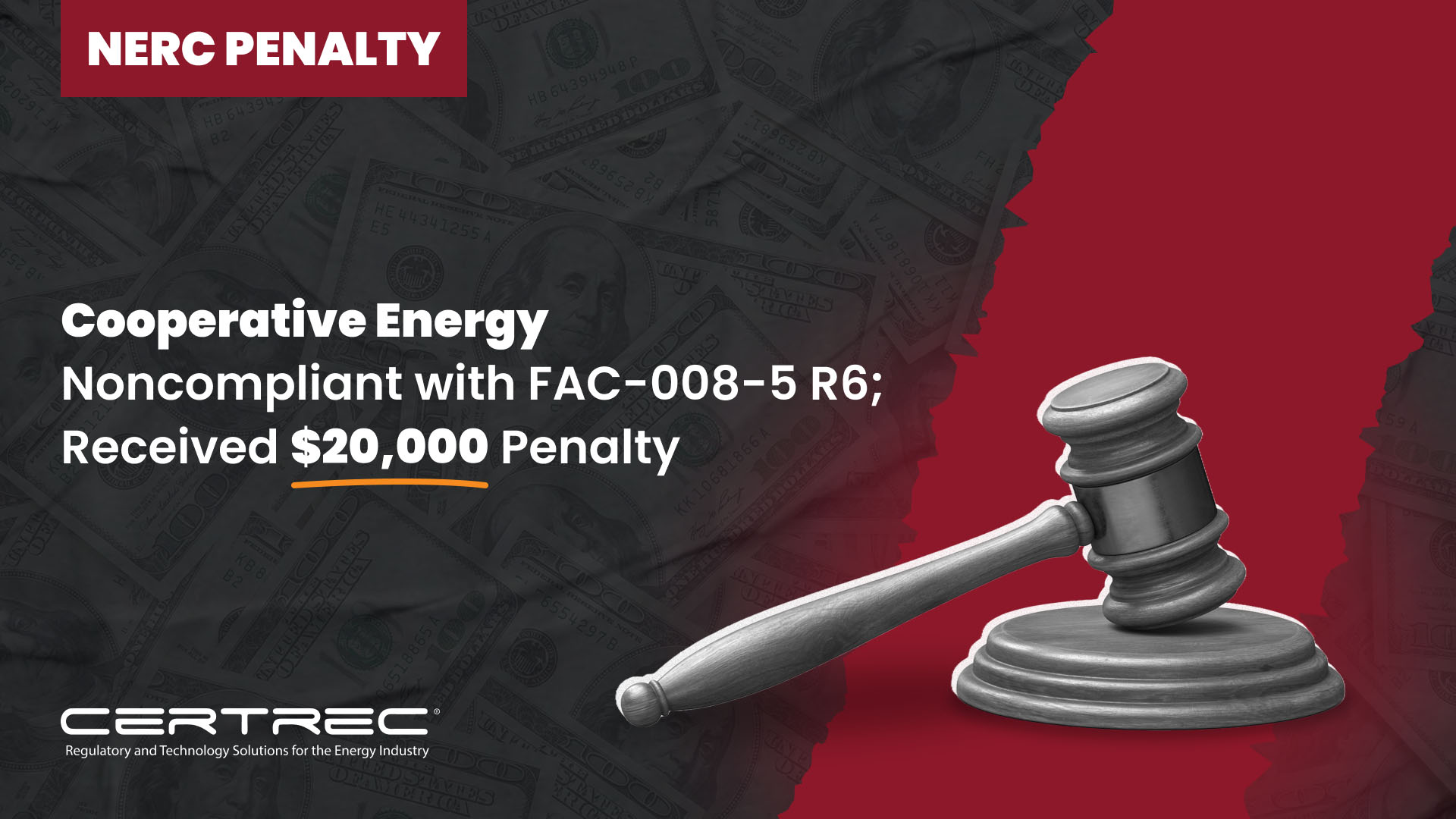Summary of NERC Penalties
REGION | WHEN? | ENTITY | COMPLIANCE AREA
| VIOLATION | REASON | PENALTY AMOUNT |
|---|---|---|---|---|---|---|
NPCC | Quarter 4 - October 2024 | Constellation | NERC, FERC | PRC-023-4 R1 | Constellation self-reported a violation of PRC-023-4 R1 for not using required criteria to ensure protective relay settings didn’t limit loadability. A fleet review revealed misclassified relays from a prior owner, causing a delay in compliance efforts. | $90,000 |
Summary:
Constellation submitted a Self-Report to NPCC stating that, as a Generation Owner, it was potentially in violation of PRC-023-4 R1 for failing to use one of the 13 criteria to prevent its phase protective relay settings from limiting transmission system loadability while maintaining reliable protection of the Bulk Electric System (BES) for all fault conditions. Constellation discovered the potential violation on November 7, 2019, during a fleet-wide post-implementation review of PRC-023-4. During this review it was identified that two protective relays at the Constellation’s nuclear facility, James A. Fitzpatrick (JAF), were misclassified by the previous owner and that the relays in question were load responsive relays and, therefore, applicable under PRC-023-4 R1. For NMP1 the violation began April 1, 2018, and, for JAF, March 31, 2017, and both ended on October 8, 2022, when Constellation changed the last noncompliant relay setting on the JAF 345kV line overcurrent relay to come back into compliance.
Additional Discussion:
Cause
Constellation performed an extent of condition (EOC) review, which found that one other relay, a Nine Mile Point, Unit 1 (“NMP1”) 115kV line overcurrent relay was also noncompliant, bringing the total number of potential noncompliant relays to three. The JAF 345kV line overcurrent relay and the JAF and NMP1 115kV line overcurrent relays were intended to be set using Criterion 1 from R1 of the Standard.
Because of the EOC and scope clarification completed by Constellation, the originally planned remediation date was extended by approximately one year. Particularly, the discovery of the additional noncompliant NMP1 overcurrent relay during the EOC required that both ends of the 115kV line 4 be updated. In addition, the JAF 345kV line FS-10 is shared with another entity. With the logistics of coordinating with another entity between NMP1 and JAF, and emergent work associated with nuclear safety, mitigation of the violation was delayed.
The root cause was ineffective preventative controls, including Constellation’s failure to recognize the previous owner’s inadequate preventative controls when purchasing the generation plants.
Disposition
NPCC considered the following factors in its penalty determination:
1) Compliance History
When assessing the penalty for the violations at issue in this Agreement, NPCC considered whether the facts of the violations constitute repetitive infractions and determined that Constellation had no relevant prior noncompliance with PRC-023-4.
2) Cooperation
Constellation was cooperative throughout the entire enforcement process and provided requested information to NPCC that was detailed, organized, and thorough.
3) Self-Disclosure
Constellation self-reported the violations described in this Agreement. Effective oversight of the BPS reliability depends on Registered Entities self-reporting. As such, NPCC seeks to encourage self-reporting of violations, and therefore, is applying mitigating credit in the instant case.
4) Settlement
Constellation agreed to settle this matter. A willingness to resolve cases without the need for a trial-type hearing reduces the amount of time and resources that NPCC, NERC, and the Federal Energy Regulatory Commission would otherwise expend to resolve the R1 violation. Additionally, it is important to promote prompt resolution of enforcement actions so that Constellation can focus on mitigation and reducing risks to reliability.
NPCC determined that the violation of R1 posed a moderate risk to the reliability of the Bulk Power System (“BPS”) based on the following factors.
- Failing to use one of the stated criteria in R1 to prevent its phase protective relay settings from limiting transmission system loadability could lead to lines tripping due to loadability, which could interfere with system operators’ ability to take remedial action to protect system reliability. Specifically, by not having the three overcurrent relays within the scope of any criterion listed, the relays could trip outside the bounds of their required setpoints, resulting in a misoperation of their associated lines. Either of the in-scope lines tripping could result in an overload of a subsequent line or trip the attached nuclear plants, JAF and NMP1, which have an aggregate nameplate rating of 1,525 MW. Constellation’s Reliability Coordinator (NYISO), by comparison, is required to have operating reserves of approximately 1965MW. This violation also had a long duration of approximately 5.5 years, beginning the date Constellation registered JAF.
- The 345kV FS-10 line overcurrent relay was set at 478 MVA, which is approximately 33 percent of the normal line rating. Historical loading from 2020 shows that the 345kV FS-10 line reached a maximum of 661 MVA and demonstrates that the historical loading of the line can reach above the relay setpoint and potentially cause the line to trip due to loadability if not for Constellation’s communication-aided blocking scheme (described further below). Criterion 1 states that an entity must set transmission line relays so they do not operate at or below 150 percent of the highest seasonal Facility Rating of a circuit, for the available defined loading duration nearest four hours (expressed in amperes). Using Criterion 1, the original relay setpoint was set to trip at 33 percent of the highest seasonal Facility Rating as described in Criterion 1 (LTE), making the original setpoint 117 percent of the line rating lower than the required setpoint.
- The 115kV line 4 overcurrent relays were set at 79.7 and 95.6 MVA, respectively. This is approximately 66 percent of the normal line rating using the lowest setting. Historical loading from 2020 shows that the peak for that year was approximately 48 MVA. This would indicate that even if the communication scheme had failed during the noncompliant period, the line would not have tripped due to loadability. Nevertheless, the relay being set well below the normal line rating may not permit a system operator or generation control room operator to take action in an emergency situation when the communication is down. Using Criterion 1, the original relay setpoint was set to trip at 66 percent of the highest seasonal Facility Rating as described in Criterion 1 (LTE), making the original setpoint 84 percent of the line rating lower than the required setpoint.
- Constellation had a reduced risk of the lines inadvertently tripping due to a communication-aided protective control. The relays themselves were used in conjunction with a communication-aided line differential relay, which would trip the protected line or equipment should a failure of the communication circuit occur while there is sufficient emergency load on the circuit. The subject relays phase overcurrent supervisory elements (i.e., phase fault detectors) were associated with current-based, communication-assisted schemes (i.e., pilot wire) and, therefore, the scheme was only capable of tripping in the event of a loss of communications. There were alarms in the JAF control room associated with both schemes, which also included monitoring of the integrity of the pilot wires. There have been no actual consequences to date as no pilot wire communication circuit failure or actual emergency line loading events have occurred that would trigger any of these in-scope relays.
- No event or harm occurred during the timeframe of the violation.
About Certrec:
Certrec is a leading provider of regulatory compliance solutions for the energy industry with the mission of helping ensure a stable, reliable, bulk electric supply. Since 1988, Certrec’s SaaS applications and consulting expertise have helped hundreds of power-generating facilities manage their regulatory compliance and reduce their risks.
Certrec’s engineers and business teams bring a cumulative 1,500 years of working experience in regulatory areas of compliance, engineering, and operations, including nuclear, fossil, solar, wind facilities, and other Registered Entities generation and transmission.
Certrec has helped more than 200 generating facilities establish and maintain NERC Compliance Programs. We manage the entire NERC compliance program for 80+ registered entities in the US, Canada, and Mexico that trust us to decrease their regulatory and reputational risk. Certrec is ISO/IEC 27001:2013 certified and has successfully completed annual SOC 2 Type 2 examinations.
For press and media inquiries, please contact marketing@certrec.com.
Share








